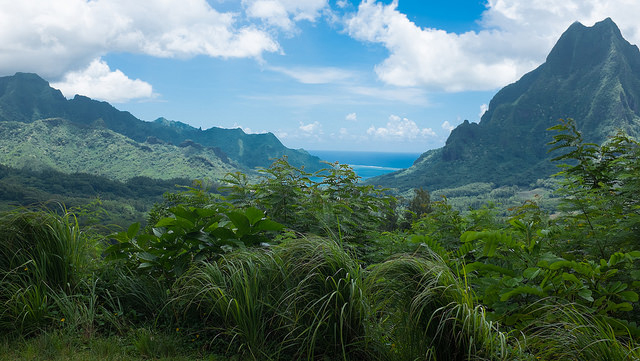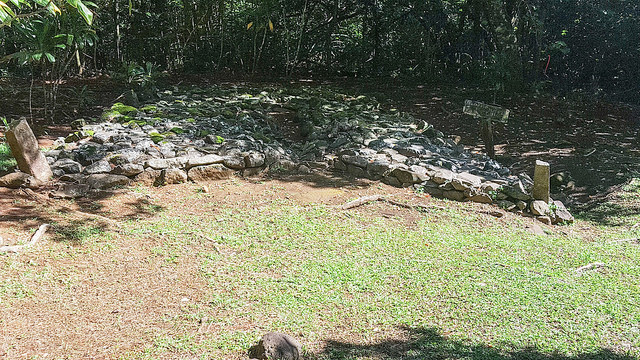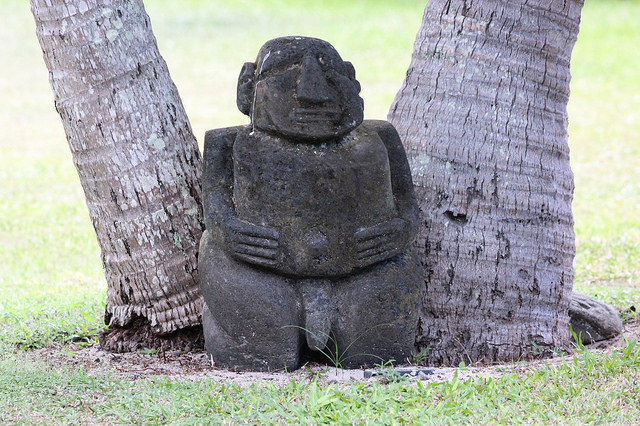In his book Tahitians: Mind and Experience in the Society Islands, Robert Levy (1973) explained that relationships in French Polynesia were more egalitarian in some communities than in others. In the small, rural village on Huahine where he did much of his fieldwork, the Tahitians were mostly free of vertical power structures. However, in an urban neighborhood in Papeete, the capital of French Polynesia, where people worked in organizations, imbalances of power were more in evidence.

Levy emphasized that the Tahitians in the small village were mostly egalitarian. They exhibited very little respect toward elders, authority figures, or heads of households. “Where differences of power or authority do exist, they are veiled,” he wrote (p.203). He did make one telling point, however—that pre-Christian Tahiti had a more strongly hierarchical society.
Last week, an article in the student newspaper for the College of William and Mary, The Flat Hat, described a presentation by an anthropology professor at the college named Jennifer Kahn about the archaeological evidence for relationships of power and inequality in the Society Islands 1000 years ago. Dr. Kahn has conducted research on the island of Moorea, where she is trying to tease out how social inequalities were structured among the prehistoric Tahitians.

She told her audience that the structures of houses in pre-Christian Tahiti—such as whether they had rounded or rectangular ends—indicate whether they were used by chiefs or commoners. Also, the nature of the ritual centers preserved in the Opunohu Valley of Moorea, where she has been working, demonstrate how important ideology was in ancient times. The ritual centers, she said, indicate that the elites at that time held political, economic, and spiritual meetings that would help them consolidate their status relations.
Kahn has made a point of including Tahitians in her fieldwork as a way of showing them how their ancestors lived. To overcome the difficulties of making accurate portrayals, she and her Tahitian crew have restored some houses for visitors. “When most people look at a stone outline of a house, it is very hard for them to envision what the house might have looked like, so we use my archaeological data to restore what the house would have looked like,” Kahn said.

She and her assistants also created trilingual panels, in English, French, and Tahitian, along a trail of the restored houses on Moorea. She involved people from the Ministry of Culture plus other experts to get her information right. According to the journalist, Dr. Kahn gained a “humanized lens” by working with the local crew, which had a traditional knowledge of the area. “They really have a personified narrative in their head of what they are finding, which is important to me as a scientist to keep their human perspective in my mind,” the anthropologist said.
Levy (1973) also described power relationships in the pre-colonial Tahitian villages. He wrote that the chiefs were evidently satirized in theatrical performances; their powers were limited by other high-status people in their districts. Furthermore, the Tahitians appeared to be very fond of their chiefs, who returned the affection with good will. Both scholars, Levy a half century ago and Kahn today, agree that the colonial period completely destroyed the hierarchical systems in the Society Islands.
The journalist writing for the student newspaper quoted the enthusiastic comments of several students about Dr. Kahn’s presentation and for the study of French Polynesia.